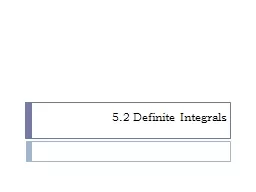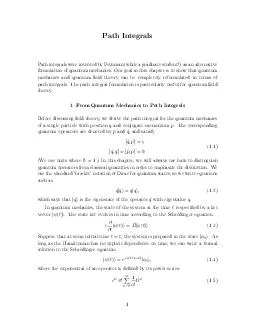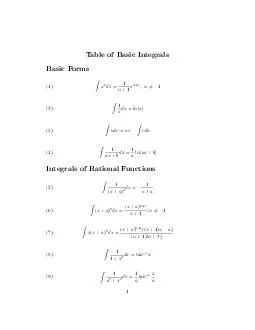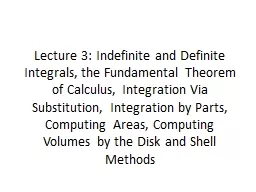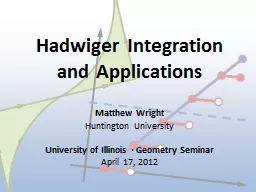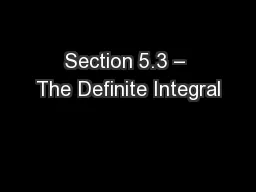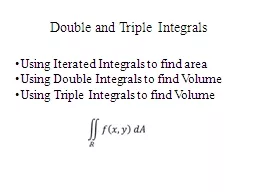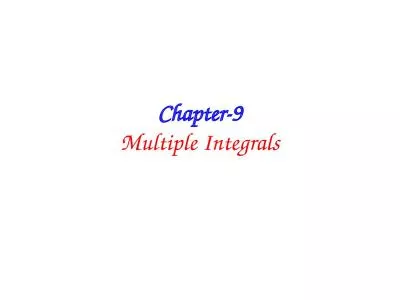PPT-5.2 Definite Integrals
Author : tawny-fly | Published Date : 2016-03-17
Sigma Notation What does the following notation mean means the sum of the numbers from the lower number to the top number Area under curves In 51 we found that we
Presentation Embed Code
Download Presentation
Download Presentation The PPT/PDF document "5.2 Definite Integrals" is the property of its rightful owner. Permission is granted to download and print the materials on this website for personal, non-commercial use only, and to display it on your personal computer provided you do not modify the materials and that you retain all copyright notices contained in the materials. By downloading content from our website, you accept the terms of this agreement.
5.2 Definite Integrals: Transcript
Download Rules Of Document
"5.2 Definite Integrals"The content belongs to its owner. You may download and print it for personal use, without modification, and keep all copyright notices. By downloading, you agree to these terms.
Related Documents

